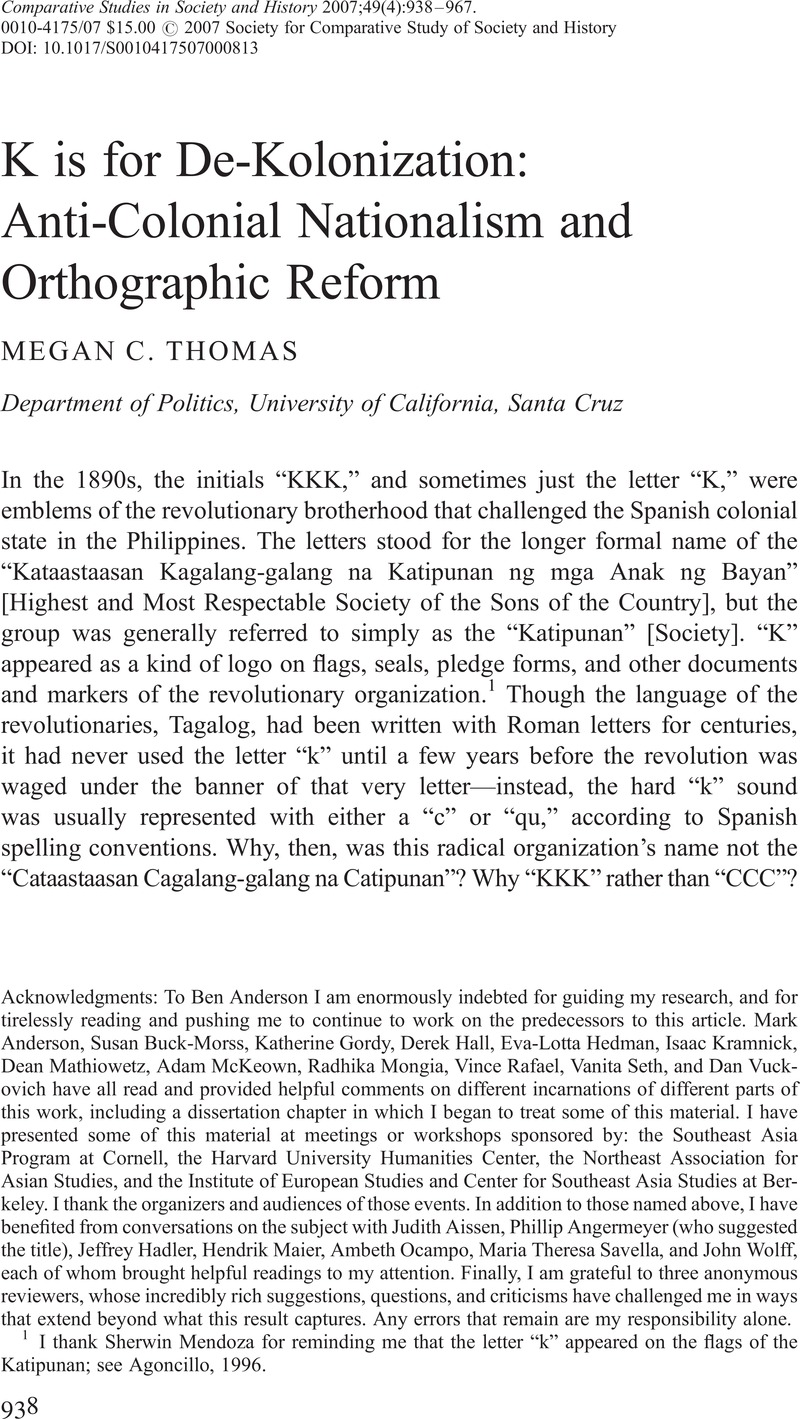Crossref Citations
This article has been cited by the following publications. This list is generated based on data provided by Crossref.
Sebba, Mark
2015.
Iconisation, attribution and branding in orthography.
Written Language & Literacy,
Vol. 18,
Issue. 2,
p.
208.
Fogg, Kevin W.
2015.
The standardisation of the Indonesian language and its consequences for Islamic communities.
Journal of Southeast Asian Studies,
Vol. 46,
Issue. 1,
p.
86.
Acosta, Mariel
and
Cuba, Ernesto
2018.
L’agitation du quotidien.
GLAD!,
Tobar Delgado, Eduardo
and
Fernández, Mauro
2019.
Hacia una ortografía para el chabacano zamboangueño.
Language Problems and Language Planning,
Vol. 43,
Issue. 1,
p.
32.
Harasta, Jesse
2021.
Metalinguistic Communities.
p.
141.
Presutti, Stefano
2021.
The development of Latin alphabet identity markers: A comparison among three Romance graphemes.
Lingua,
Vol. 259,
Issue. ,
p.
103118.





